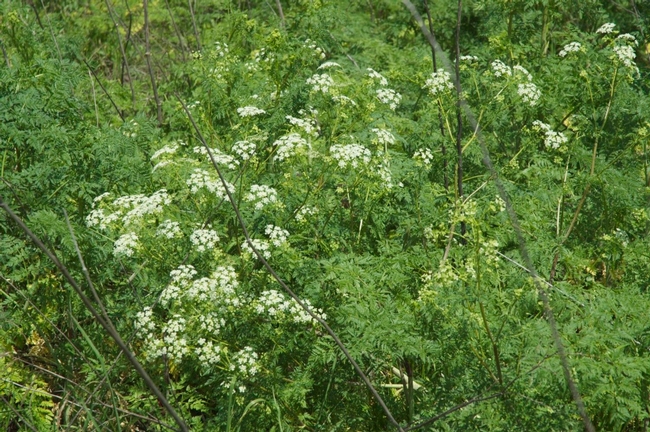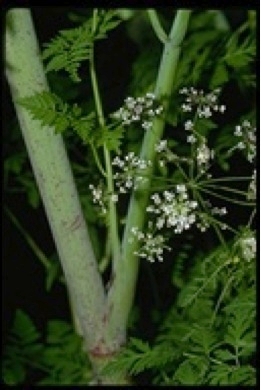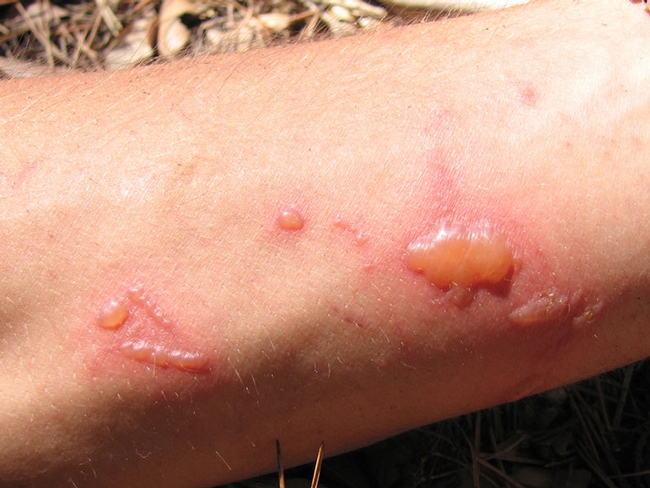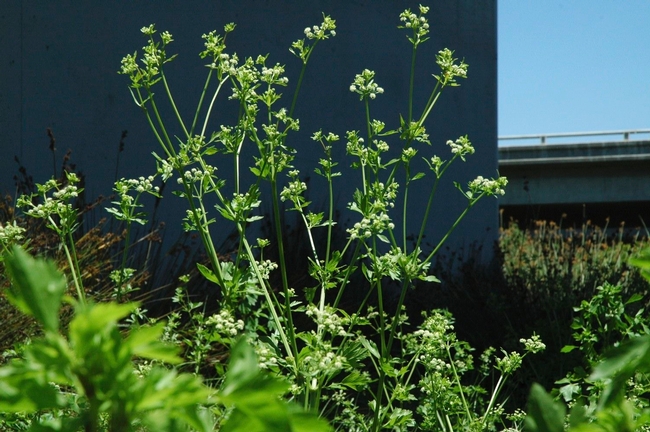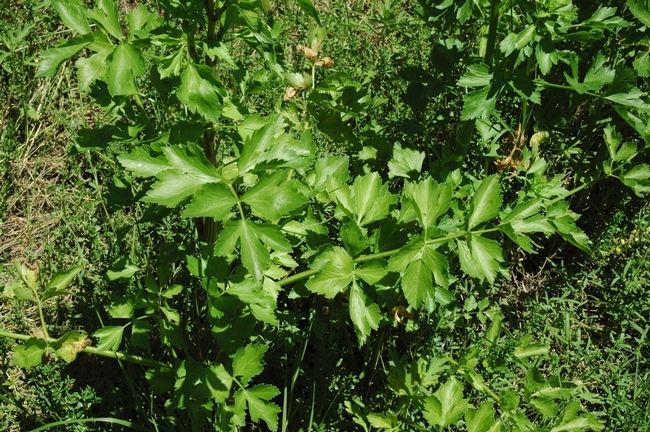Phytophotodermatitis, umbels and leucoderma
Carl Bell
Regional Advisor – invasive Plants
The Apiaceae family is a large (300+ genera worldwide) and interesting group of native plants (water hemlock, wild carrot, sanicle), weeds (fennel, poison hemlock, queen ann's lace) and important crops (carrot, celery, dill, fennel and parsley). The family is often referred to as the umbel or the Umbelliferae, the old family name. Some genera are represented in California as native plants (Daucus pusillus, wild carrot), crops (D. carota, carrot) and weeds (D. carota, Queen Ann's lace, yes, the weed and the crop are the same species).
There are some very distinctive characteristics that make it fairly easy to tell that a plant is a member of the family, like the umbel shaped inflorescence and divided leaves. Identifying species can be more challenging. And many of the species are toxic, which makes proper identification critical. People have died from eating the native water hemlock (Cicuta spp) because they mistook it for parsnip (Pastinaca sativa). And reportedly it is a very unpleasant death; violent convulsions followed by suffocation. Socrates was executed with a poison hemlock drink (Conium maculatum, photo to the right), which causes suffocation, but not convulsions. I saw one reference that said the hemlock drink was combined with opium, so he went to sleep, had a good dream or two, then died peacefully.
Poison hemlock leaves look like parsley, the roots look like parsnips and the seed look like anise, but note the purple blotches on the stem to the left - very diagnostic.
“Amateur foragers should stay away from mushrooms and the Apiaceae.” This is a quote that I found years ago, I no longer know who it is from but it is still good advice.
This blog is about phytophotodermatitis and leucoderma. Phytophotodermatitus is a condition where a photosensitizing chemical in a plant comes in contact with a person's skin, which causes the person to be abnormally sensitive to untraviolet radiation. The result is hyperpigmentation, which can range from mild to very purple skin coloration lasting from days to months and in some cases be permanent. Blistering can also occur. To read about the problem in greater detail, I found this webpage in the Electronic Textbook of Dermatology to be very comprehensive and helpful.
Several plants are known to produce the sensitizing chemicals, known as furocoumarins or psoralens, in particular many common umbels. Known species include carrot/Queen Ann's lace, celery, Greater Ammi (Ammi majus), giant hogweed (Heracleum mantegazzianum) and parsnip. The only native umbel that I found any references to being a photosensitizing problem is Heracleum maximum (syn H. lanatum), but I would be suspicious of any umbel. Other familes that have species known to contain psoralens are the Rutatceae (citrus in particular, but also bushrue, Cneoridium dumosum), legumes (Fabaceae), and the Moraceae (fig and mulberry). In the webpage above there is a mention of fig leaf, as in doing an Adam and Eve reenactment, as a problem, ouch.
So what do you do to avoid or reduce this problem? To have a reaction, it takes getting the psoralen on your skin, typically from moist foliage, and exposure to sunlight shortly thereafter. So, know what you are grabbing, know in particular what you are cutting or string trimming (that throws chopped foliage everywhere, the perfect way to get contaminated). Keep your skin covered up when in the field.
Wild celery (Apium graveolens, the same species as the edible veggie) to the left and below right.
Farmworkers that harvest celery by hand are routinely coming in contact with psoralen. But they are completely covered up when they work, mostly to reduce the other deleterious effects of too much sunlight on skin, so they do not seem to report too many cases of phytophotodermatitus. When you leave the field, wash off any exposed skin, change clothes and wash them. Avoid sunlight (UVA) exposure until after you are all cleaned up.
So, what is leucoderma? [aka vitiligo, white leprosy, or piebald in old English literature.] It is a disease in which the pigment cells, the melanocytes in the skin are destroyed, resulting in patches of white skin. The cause is unknown at present, but is thought to be an autoimmune response in affected individuals. It can occur in anyone, but it is more evident on dark skinned persons. The photo of these hands with leucoderma was taken in 1886, but it has a much longer history as a disease. Around 2000 BCE, over four millennia ago, the juice of guess what, an umbel, (greater amni, Ammi majus) was rubbed on patches of vitiligo to treat the problem in Egypt. Herbal concoctions are still used today in Egypt and India for treating leucoderma.
One man's poison is another man's cure; how true it is.
